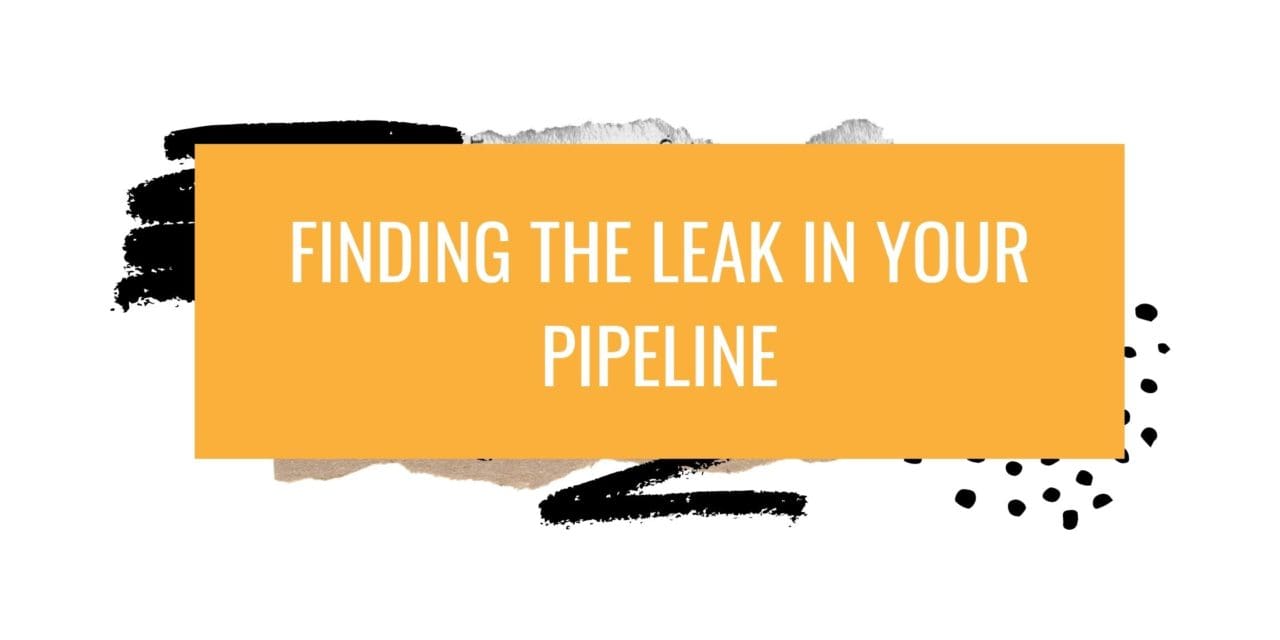Even profitable businesses potentially have leaks in their sales pipeline, and finding them can be the difference between moderate success and knocking your business profits out of the ballpark.
But where should you be looking to find where a leak might be? Well, leaks likely happen in a couple of places during your sales pipeline, so let’s investigate further.
The trouble with leaks in your sales pipeline
Like a water main that’s steadily leaking beneath the ground, sales leaks can be hard to spot, and in the interim they’re costing you money.
In some cases, those leaks might be like a steady flow of cash that’s being siphoned out of your business, but in other instances, it can be a slow, subtle leak that can only be detected with expert help.
Regardless of whether it’s small or big, here are the first places to start looking for leaks.
It’s all in the numbers
Finding any leak in your business comes down to taking a good hard look at your business numbers and ratios.
What you’re ultimately trying to determine is the conversion rate between customer contacts and actual sales.
Along the way there will be numerous touchpoints in the customer journey, and determining where the leak is arising, involves taking a good hard look at each.
What do we mean? Well let’s walk through the customer journey…
The customer journey
The customer journey varies from business to business but involves all the touchpoints a client has with your business prior to making a transaction.
For example, if your business has a website with contact form, you would start by looking at the volume of website visits, versus the actual number of contacts made.
Then you look at contacts to sales.
In a real-world environment, you would look at the number of walk-ins and telephone inquiries, versus the number of people either purchasing or booking to use a service.
You would also look at things like repeat business, customer follow-up etc.
Each of these touchpoints indicates how they impact your success rate, and the likelihood is they tell you where a leak might be occurring, and potential areas where you have the opportunity to improve.
What next?
Once you’ve defined the areas where your sales pipeline is leaking, it’s then important to put systems and procedures in place to plug that leak.
For example, if your business fails to follow up after a sale, which impacts repeat business, you need to implement a system and procedure to ensure follow-up calls are made. In service sectors this is particularly important.
If the leak occurs between when someone talks to your sales staff and a sale is made, that indicates you need to focus on the systems and procedures of staff training or look at the skills of a specific sales staff member.
The bottom line
Leaks can and do happen even in the best of businesses and finding them is one of the most effective ways of taking your business up a gear.
After all, leaks usually involve either existing or potential clients who have already been involved in some way with your brand.
That means they are part way between prospect and converted sale and identifying what went wrong opens a wealth of opportunity.
Talk Strategy with Clive
With more than 30 years’ experience in mentoring small to medium-sized businesses around Australia. Clive works with company owners and their teams to grow their business and achieve goals through startegic coaching.


















